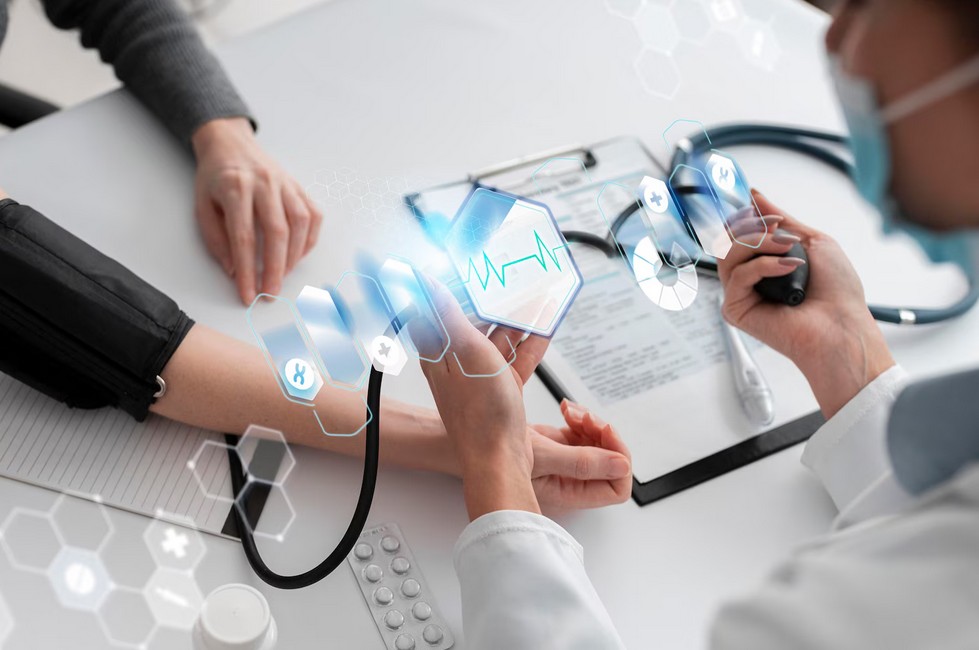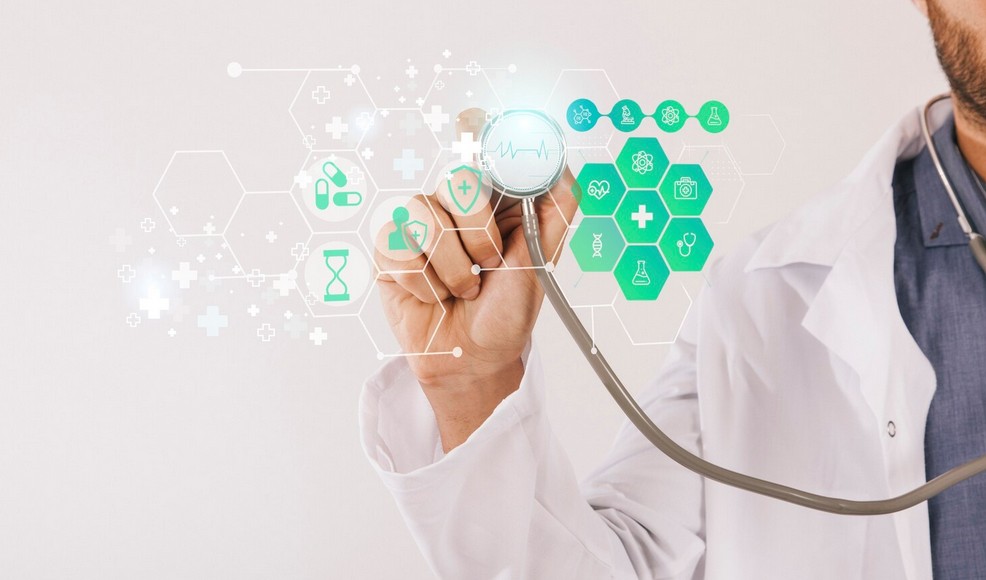Precision Through Expertise: The Only Standard for Life Sciences.
Don’t compromise patient safety or regulatory approval. Demand a verifiable subject matter expert translator for your critical documents.
True accuracy requires a translator with subject knowledge—not just fluency. Our experts possess both native language skills and formal scientific credentials.
In life sciences, an error is a liability. Our quality assurance translation process, led by SMEs, is your ultimate tool for risk mitigation.
A pharmacist translator ensures technical accuracy in dosage, labeling, and regulatory submissions, which general linguists simply cannot guarantee.
Life Science Translation: Why the Subject Matter Expert is Non-Negotiable.
Life Science Translation: The Mandate for Subject Matter Expertise.
In life sciences, a «close enough» translation is a dangerous compromise. A mistranslated dosage instruction or an imprecise clinical trial protocol isn’t a minor error—it’s a significant risk to patient safety, data integrity, and regulatory approval.
While fluent bilingualism is the baseline, true accuracy requires deep domain knowledge. This is where the subject matter expert translator becomes your most critical quality control checkpoint. But what exactly sets them apart?
What is a Subject Matter Expert Translator? More Than Just Bilingual.
A subject matter expert translator (SME) possesses dual expertise: native-level linguistic skills and formal education or professional experience in a specific scientific field, such as pharmacology, medicine, or biomedical engineering. This dual qualification is what differentiates a standard linguistic translation from SME medical translation.
The distinction between a general translator and an SME isn’t theoretical—it has concrete consequences for accuracy and safety. It’s the difference between merely translating words and accurately conveying critical scientific meaning. Generalists, for instance, are trained to prioritize natural flow and equivalence in common speech. Furthermore, their work is often judged on whether the text reads well. In contrast, an SME’s work is judged on whether the text is functionally and clinically precise, ensuring that a scientist or regulatory body can use the translated document safely and correctly.
Again, consider the translation of a single, common word like ‘administration’ in a clinical context:
| Term & Context | General Translator’s Approach | SME (Pharmacist) Translator’s Approach | Potential Impact |
| «administration (of the drug)» | May use the general word for «management» or «oversight,» as it is the most common translation of the root word. | Understands this refers to how the drug is delivered. Will specify the precise method: «intravenous administration,» «subcutaneous administration,» or «oral administration.» | Ambiguous, unsafe. The method is unclear, posing a direct risk to patient safety and misinterpreting the clinical protocol. |
| «Endpoint» (in a trial) | May use a generic term for «conclusion» or «final point,» semantically correct but clinically meaningless. | Understands this refers to the predefined primary or secondary outcome measure. Equally important, they ensure the translation is consistent with statistical definitions. | Invalidates trial data. The data integrity and subsequent analysis could be compromised due to a fundamental definitional error. |
As these examples show, an SME’s subject knowledge is what transforms a technically correct translation into a clinically precise and safe one. This is the core of true quality assurance translation—it’s about ensuring the text is not only correct but also functionally accurate for its intended use. Besides, this level of care is the ultimate risk mitigation strategy for global life science companies.
Eliminate the Hidden Error Risk.

Why a multistep translation review by two SMEs is your ultimate safeguard.
Standard agencies skip scientific review, increasing the risk of subtle but dangerous errors. Our process requires two experts to guarantee ensuring clinical translation accuracy.
This meticulous, double-check methodology is engineered to eliminate any possibility of avoiding medical translation errors before the document leaves our system.


Our Verifiable Expert Vetting: Meet Our Clinician Translator TeamMessage:
We document the credentials and specialized background of every subject matter expert translator assigned to your high-stakes project.
The Three Pillars of Risk Mitigation: Where SME Medical Translation is Essential.
In a high-stakes industry like life sciences, every document is a liability or an asset. The choice hinges on precision. The requirement for a subject matter expert translator elevates from a preference to a non-negotiable requirement across three critical areas: Clinical, Safety, and Regulatory.
Pillar 1: Clinical Trial Documents.
The global expansion of clinical trials means documents like protocols, patient-reported outcomes (PROs), and Investigator’s Brochures must be translated into dozens of languages. But, the complexity of the terminology means generalists can introduce dangerous errors.
Ensuring Protocol Integrity.
A clinical trial protocol is the blueprint of a study. Misinterpretations of key parameters—such as inclusion/exclusion criteria, randomization methods, or drug stability requirements—can invalidate an entire multi-million dollar trial. Furthermore, a medical translator with PhD-level knowledge of trial design can spot and accurately translate complex statistical terms that a standard linguist would likely only approximate. This specific expertise is essential for maintaining data consistency across different trial sites globally.
The Precision of Informed Consent Form Translation.
The Informed Consent Form (ICF) is both a legal document and an ethical promise to the patient. It must accurately convey complex medical risks and procedures while remaining fully comprehensible to a layperson. Yet, many translations fail because they are linguistically accurate but culturally jarring. An SME understands the need to translate the concept of informed consent correctly, ensuring legal and ethical compliance in the target country.
Pillar 2: Safety & Pharmacovigilance.
Pharmacovigilance (PV) is the critical process of monitoring the safety of marketed drugs. The documents involved, such as case report forms (CRFs) and aggregate safety reports, contain sensitive data where minor linguistic ambiguities can have fatal consequences.
Adverse Event vs. Adverse Reaction.
The difference between an Adverse Event (AE) and an Adverse Reaction (AR) is fundamental in PV. An AE is any untoward medical occurrence experienced by a patient; an AR is specifically attributed to the drug. Whereas a lay translator might see them as synonyms, an SME knows that mixing these two terms in a translated safety report could trigger incorrect regulatory reporting requirements or unnecessarily cause panic regarding a drug’s safety profile. This reliance on the specific expertise of the SME medical translation team is a cornerstone of global risk management.
The Pharmacist Translator as a Safety Gatekeeper.
The pharmacist translator (a specific, high-value type of SME) plays a vital role in localizing drug labels (SmPCs/PILs). They possess the clinical knowledge to ensure:
- Dosage Accuracy: Converting complex units (e.g., μg/kg to local standards) without error.
- Drug Interactions: Ensuring the translated warnings about interactions are clear and conform to national drug authority standards.
- Local Nomenclature: Using the officially recognized chemical and generic names, which can differ between regions.
This level of specialized medical translation minimizes the risk of medication errors at the point of dispensing and patient use.
Pillar 3: Regulatory Compliance and Submissions.
Regulatory submissions (e.g., to the FDA, EMA) are high-stakes, time-sensitive documents that must conform exactly to strict local and international templates.
Mastering Regulatory Jargon.
The language of the regulatory affairs world is its own dialect. Terms like «Summary of Product Characteristics» (SmPC), «Investigator’s Brochure» (IB), and «Quality Review Document» (QRD) all have specific, non-interchangeable equivalents in various languages. Again, only an SME medical translation expert who has worked on multiple submissions understands the implicit meaning and required formatting for these complex documents. This prevents costly «query cycles» from regulatory agencies, accelerating time-to-market.
The Role of ISO 17100 Medical Translation.
The adoption of international quality standards, such as ISO 17100, is crucial for demonstrating robust translation quality control life sciences processes. This standard mandates specific requirements for linguistic qualifications, but but we go further. Our application of the ISO standard requires that translators meet the linguistic standard and possess verifiable subject knowledge. This is a powerful signal to regulators that the translation is handled with the highest degree of diligence.
The Anatomy of True Quality: Our SME-Driven Quality Assurance Translation Process.
At [Your Company Name], integrating SMEs isn’t an add-on; it’s the foundation of our quality assurance translation process. Our systematic approach ensures expertise at every stage, dramatically avoiding medical translation errors and eliminating the risks of general translation. This is what separates true professional translation services from simple word-for-word conversion.
Step 1: Project Analysis & SME Matching (The Pre-Flight Check).
The process begins with a detailed project analysis where the source document is assessed for its specific domain (e.g., gene therapy, medical devices, diagnostics). Furthermore, the document is matched to a clinician translator or pharmacist translator whose background precisely aligns with the content. This prevents a general biochemist from handling a highly specialized cardiology report.
Step 2: Translation by Domain Expert (The First Pass).
The subject matter expert translator performs the initial translation. Their dual competence allows them to fluidly move between the technical language of the source and the appropriate clinical terminology of the target language. Whereas a generalist might spend hours researching a specific proprietary compound name, the SME will recognize it instantly and apply the correct local or official nomenclature.
Step 3: Review by a Second SME (The Multistep Translation Review).
A second subject matter expert (the reviewer) reviews the translation against the source. This is not merely proofreading; it’s an independent scientific and clinical validation. Finally, this second layer ensures that no nuance was missed and that terminological consistency is absolute, minimizing the risks of general translation and providing absolute certainty to the client.
Step 4: Final Linguistic Proofread and Reconciliation.
The final step in our rigorous process involves a professional editor who is a native speaker of the target language but may not be an SME. Their sole focus is on linguistic polishing: checking for grammar, flow, style, and cultural naturalness. Furthermore, this step includes a reconciliation check to ensure that all changes made during the SME review did not inadvertently alter the scientific meaning of the text. This crucial back-and-forth guarantees both scientific accuracy and linguistic polish, ensuring true accurate medical translation. This commitment to a multistep translation review is what our clients rely on for their most sensitive projects.
The Power of Unified Terminology: Glossaries and Translation Memory (TM).
An SME-led process is incomplete without robust technological support. Our subject matter expert translators are instrumental in building and maintaining specialized glossaries and Translation Memories (TM). They ensure that complex, proprietary, or highly regulated terms (like a specific molecular target or a device mechanism) are translated consistently throughout all documentation—from the clinical trial protocol to the final packaging insert. This meticulous attention to terminology management is the unseen hero in ensuring clinical translation accuracy across a massive volume of documents, saving time and, more importantly, mitigating future regulatory risk.
Case Studies in Compromise: The High Cost of Avoiding Medical Translation Errors.
The decision to bypass a subject matter expert translator in favor of a lower-cost generalist agency always carries a hidden price tag. This hidden cost manifests as regulatory setbacks, patient safety incidents, and ultimately, significant erosion of a pharmaceutical or medical device company’s time-to-market. Understanding these risks is fundamental to recognizing why an SME is not a luxury, but a necessity.
Case 1: Regulatory Rejection Due to Imprecise Nomenclature.
In one instance, a company used a generalist translator for their regulatory submission (SmPC) into a key European language. The translator used a close synonym for a specific disease classification, failing to adhere to the officially recognized European Medicines Agency (EMA) nomenclature standard (e.g., using a common name instead of the MedDRA term). Consequently, the regulatory body issued a costly query, delaying approval by six weeks and forcing the pharmaceutical company to undertake a complete review of all translated materials. This error, stemming purely from a lack of translator with subject knowledge, illustrates the direct financial consequence of poor translation quality control life sciences.
Case 2: Ambiguity in Device Instructions and Patient Harm.
A medical device manufacturer localized their Instructions For Use (IFU) for an emerging market. The generalist translator failed to grasp the mechanical distinction between two critical terms: «fixation» (a permanent surgical step) and «stabilization» (a temporary alignment). The resulting ambiguity in the translated IFU led to confusion among surgeons, necessitating a product recall in that region and incurring massive reputational damage. Again, this highlights the severe ethical and financial consequences of risks of general translation when patient interaction is involved.
The Ethical Mandate: Protecting Vulnerable Populations.
Beyond regulatory and financial costs, there is an ethical imperative. When patient-facing materials, such as Patient Information Leaflets (PILs) or questionnaires, are poorly translated, it undermines the patient’s autonomy and ability to make informed decisions about their health. Therefore, every SME medical translation project is seen through the lens of patient comprehension and trust. The expert’s role here is to not only translate the science but to ensure the tone is appropriate for the target culture, a level of cultural-scientific sophistication that a generalist cannot match.
Accuracy is Insurance Against Regulatory Delays.



Inaccurate terminology or formatting from general translators triggers regulatory setbacks, delaying TTM. Our experts ensure first-pass compliance, protecting your investment and timeline.

The SME Ecosystem: Types of Specialized Subject Matter Expert Translators.
The Life Sciences sector is vast, encompassing everything from computational biology to point-of-care diagnostics. Whereas a single general translator might claim to handle all of it, true professional translation services recognize the need for a specialized ecosystem of SMEs.
The Pharmacist Translator: Bridge Between Lab and Patient.
As discussed, the pharmacist translator is crucial for dosage, labeling, and regulatory data. Their training provides an inherent understanding of drug development pathways, clinical pharmacology, and pharmaceutical chemistry. Besides, they are often best positioned to localize promotional and marketing claims to ensure they comply with local standards for drug advertising, a critical step in quality assurance translation.
The Clinician Translator: Ensuring Real-World Clinical Relevance.
A clinician translator—often a doctor, nurse, or medical researcher—translates documents like pathology reports, medical histories, and clinical trial site training manuals. Their firsthand experience in patient care and hospital settings ensures that the translated text reflects real-world clinical practice, providing essential context that translator with subject knowledge can only possess through direct experience.
The Regulatory Specialist: Navigating Global Complexity.
This SME subset specializes purely in submissions and compliance. They keep up-to-date with evolving global legislation (e.g., MDR/IVDR in the EU, or new FDA guidance). Their expertise ensures that the translation uses the correct templates and terminology required by specific national competent authorities, which is vital for seamless global expansion of any life science translation services.
The Technical Writer SME: Medical Device Documentation.
Medical devices, from complex imaging systems to simple diagnostics, require unique documentation: Instructions For Use (IFUs), software localization, and technical specifications. Again, a translator with subject knowledge in engineering or biomedical technology is required here to ensure that technical specs, measurements, and maintenance instructions are translated with engineering-level precision, ensuring clinical translation accuracy in all technical manuals. For detailed translation services for these documents, you can find more information on medical device translation.
Beyond Language: The SME Medical Translation Advantage in Localization.
While the core focus of the subject matter expert translator is scientific accuracy, their expertise is equally critical in the realm of localization. Localization goes far beyond literal word conversion; it ensures the entire message—including cultural nuances, tone, and legal context—is adapted for a specific target region. For life sciences, localization is about making science relevant and trustworthy to a local audience.
The Cultural Nuances of Health Communication.
Health and wellness are profoundly culturally sensitive topics. What is considered standard medical communication in North America may be considered insensitive or offensive in parts of Asia or the Middle East. For instance, direct, alarming language about disease risk, which is common in Western patient leaflets, may be counterproductive in cultures that prioritize family consultation or rely heavily on non-verbal communication. Furthermore, an SME with regional experience ensures that the translation respects local beliefs and hierarchies, which is essential for ethical patient engagement.
Localization of Patient-Reported Outcomes (PROs).
Patient-Reported Outcomes (PROs) are vital to clinical trials, as they measure the patient’s perspective on their health status. The translation of these surveys must be meticulously validated, as simple linguistic variations can change the patient’s interpretation of a question, thereby compromising the trial data. A clinician translator understands not just the words, but the psychological context of the questions—for example, ensuring a Likert scale (e.g., «Always» to «Never») is culturally equivalent in its intensity. This is a subtle yet critical function of translation quality control life sciences.
Adapting Visuals and Metaphors.
Localization extends to non-text elements. The use of specific imagery—such as diagrams of the human body, color palettes, or illustrations of patient-doctor interaction—must be vetted for cultural appropriateness. An SME medical translation team works with localization specialists to advise on these details. For example, colors used in packaging may have entirely different connotations (e.g., green meaning life in one place, or sickness in another), and illustrations of male or female authority figures must be handled with sensitivity to local gender roles in healthcare.
The Technological Edge: SME Collaboration and CAT Tools.
The speed and scale of modern pharmaceutical development necessitate the use of Computer-Assisted Translation (CAT) tools. Yet, these tools are only as effective as the human expertise that programs and validates them. The subject matter expert translator is not replaced by technology; rather, their expertise is amplified by it.
Curating and Validating Translation Memory.
Translation Memory (TM) systems store every translated sentence pair, allowing for re-use and consistency across vast document sets. The SME’s role here is crucial: they are responsible for validating the TM content. Again, they ensure that previously translated, non-compliant or contextually incorrect segments are cleansed from the memory. This proactive management, driven by a translator with subject knowledge, ensures that quality is maintained even when dealing with recurring text across regulatory filings, making it a powerful element of quality assurance translation.
Beyond Basic Glossaries: Creating Subject Knowledge Termbases.
A general glossary lists word equivalents. An SME-curated termbase for life sciences is a sophisticated database that includes contextual definitions, usage notes, and regulatory approvals for specific terms. For professional translation services, this termbase is the single source of truth for all medical terminology. For instance, the termbase will specify when to use an official WHO term versus a locally common synonym, which is non-negotiable for ensuring clinical translation accuracy.
The Future: Human-in-the-Loop Machine Translation.
Machine Translation (MT) is becoming increasingly sophisticated, but it still struggles profoundly with the precise, high-risk terminology of life sciences. This is where the SME becomes the crucial «human-in-the-loop.» After an MT engine produces a draft translation, the SME medical translation expert performs Post-Editing (MTPE). This work requires deep subject knowledge to swiftly correct errors related to dosage, clinical interpretation, and technical specification—areas where a machine error could be catastrophic. Finally, this hybrid approach delivers the speed of technology combined with the non-negotiable safety net of expert review, making it a key differentiator in the provision of high-quality life science translation services.
Partnering with Precision: Integrating the Subject Matter Expert Translator.
Choosing a translation partner is choosing a risk mitigation strategy. When dealing with clinical data, regulatory submissions, or patient safety reports, the agency must demonstrate that the subject matter expert translator is integral, not optional.
The Importance of Verifiable Credentials.
Our commitment to quality means that every pharmacist translator or clinician translator on our team has verifiable, relevant credentials. This often includes advanced degrees (e.g., MD, PhD, PharmD) or extensive professional experience in a regulated environment. This transparency is crucial for clients who must prove to regulatory bodies that their documentation has been handled with scientific rigor. Consequently, we only hire a medical translator with PhD or equivalent experience when the complexity of the document demands it.
Project Management: Speaking the Client’s Language.
Effective communication between the client (e.g., the Clinical Operations team) and the translation team is vital. The SME acts as a liaison. On the other hand, a generalist project manager may not understand a client’s query about «pharmacokinetics,» but a project manager who is a former translator with subject knowledge can communicate the issue back to the client’s scientific team using their own technical language. This seamless communication dramatically reduces delays and errors, contributing to better overall project efficiency.
Why a General Agency Poses Risks.
Generalist agencies, even those claiming «medical specialization,» often outsource work to linguists without formal subject certification. These linguists may rely solely on dictionaries and web searches. Yet, dictionary translations often lack the critical context that defines a term’s use in a specific field (e.g., toxicology vs. oncology). Therefore, to secure your project’s integrity, you must demand a clear description of the SME’s background and their exact role in the multistep translation review process. This vigilance is the first step in avoiding medical translation errors.
The Financial Imperative: Calculating the Return on SME Medical Translation.
While the primary argument for using a subject matter expert translator rests on safety and ethics, the financial case is equally compelling. For Life Science companies, the true metric of cost is not the price per word, but the total cost of delay, rejection, or error. Investing in high-quality SME medical translation is, therefore, the most effective form of financial risk mitigation.
Accelerating Time-to-Market (TTM).
Every day a drug or device sits awaiting regulatory approval is a day of lost market exclusivity and revenue. Regulatory submissions are often returned due to translational inconsistencies, incorrect application of local regulatory terminology, or formatting errors specific to the country’s dossier structure. On the other hand, a submission handled by a specialized regulatory specialist translator often passes through the linguistic checks swiftly, reducing the «query cycle» time. This speed advantage alone offers a massive return on investment that dwarfs the small premium paid for expert services.
The Hidden Cost of Inconsistent Terminology.
In large, multi-phase clinical trials, hundreds of documents are produced over years. If different translators work on different phases without unified, expert-validated termbases, inconsistencies quickly compound. These variations force internal QA teams to spend costly hours reconciling terminology, or worse, lead to questions from ethics boards. Consequently, the upfront work of the subject matter expert translator in building and policing terminology management tools dramatically reduces long-term QA costs and ensures the integrity of the cumulative data. This is proactive avoiding medical translation errors at scale.
Reducing Litigation and Product Liability Exposure.
In the event of a product failure or adverse patient outcome, documentation becomes the central evidence. If it can be shown that confusion arose from ambiguous or inaccurate instructions—a known risk of general translation—the company faces severe legal liability. Therefore, the verified precision provided by a medical translator with PhD-level knowledge acts as a powerful legal defense, confirming that the company met the highest standard of care in communicating vital safety information to the end-user. The investment here serves as insurance against crippling legal costs.
Scaling Global Trials Requires Local Experts.
Maintain data integrity and ethics across all languages with localized precision.


Accurate Medical Translation: Consistency Across Every CRF and ICF Globally.
The Regulatory Landscape: Demanding Translator with Subject Knowledge.
Global regulatory bodies, while rarely naming the translator’s degree, impose requirements that can only be met by a subject matter expert translator. The mandate for «accuracy,» «clarity,» and «consistency» is, in effect, a mandate for specialized knowledge.
The EMA’s QRD Templates and Consistency Checks.
The European Medicines Agency (EMA) requires submissions like the Summary of Product Characteristics (SmPC) and Patient Information Leaflet (PIL) to follow strict Question and Answer (QRD) templates. These require specific phrasing and adherence to controlled vocabulary. Yet, only a pharmacist translator or regulatory expert working daily with these documents understands the subtle distinctions required by the QRD group, ensuring compliance with the nuances of EU centralized procedures.
FDA Requirements for Clarity and Comprehension.
In the United States, the FDA places a strong emphasis on the comprehensibility of patient-facing information, including labels and device manuals. The requirement for clear, easy-to-understand language must be balanced with clinical accuracy. Again, this balance is the specialty of the clinician translator who understands medical complexity but can simplify the language without losing scientific precision. This dedication to dual fidelity defines our commitment to life science translation services.
The Global Harmonization Challenge.
As international standards bodies (like the ICH) strive for greater harmonization, the complexity of technical jargon increases. Translating documents like the Common Technical Document (CTD) requires a deep understanding of the module structure and data required by multiple territories simultaneously. This is the ultimate test for translation quality control life sciences, requiring SMEs to consult not just on language, but on regulatory structure.
Implementing Professional Translation Services: A Partnership Model.
Choosing an SME-driven agency should initiate a strategic partnership, not just a transaction. The best professional translation services integrate seamlessly with your internal scientific and regulatory teams.
Dedicated SME Teams for Long-Term Projects.
For ongoing clinical trials or continuous pharmacovigilance projects, consistency is paramount. We assign a stable, dedicated team of SME medical translation experts to the client’s account. This team becomes intimately familiar with the client’s proprietary terminology, internal style guides, and product pipeline. Furthermore, this long-term relationship fosters an environment where the SME can anticipate the client’s needs and proactively flag potential translational or regulatory risks, moving beyond reactive language services to proactive risk management.
The Human Element in Multistep Translation Review.
While technology accelerates workflow, the final judgment rests with the human expert. The multistep translation review process is designed to prevent «technological complacency.» For example, when translating a Case Report Form (CRF), the SME manually checks every data field against the source to ensure no data point has been corrupted during the process. This meticulous human oversight is the final guarantee of ensuring clinical translation accuracy.
Scalability Without Compromising Quality.
As companies expand into new territories, the demand for multilingual documentation can spike unexpectedly. A robust professional translation services provider maintains a global network of specialized SMEs to ensure that sudden volume increases do not necessitate compromising expertise. Whether you need translations into a common language like Spanish or a low-resource language for a Phase IV trial, the commitment to using a subject matter expert translator remains absolute.
The SME Medical Translation Difference: Technical vs. Clinical Context.
A recurring challenge in Life Science translation is the difference between technical accuracy (how a machine or substance works) and clinical accuracy (how it affects a living system). The subject matter expert translator is essential because they are trained to manage this contextual shift.
Translating Biotechnology and Research Documents.
In fields like biotechnology and genomics, the content is often abstract and highly technical. Documents like patent applications, cell line protocols, or proprietary research papers require a medical translator with PhD-level knowledge in molecular biology or genetics. Again, their expertise ensures that complex acronyms and novel scientific concepts—which may not yet have standardized equivalents in the target language—are rendered with scientific foresight and precision. Furthermore, this specialized translator with subject knowledge must anticipate how the translated terms will influence future regulatory filings and scientific publications. For specific needs in this high-growth sector, you can learn more about our dedicated Biotechnology Translation Services.
Bridging the Gap in Patient-Centric Content.
When translating patient-centric materials (like patient support programs or educational brochures), the SME medical translation expert performs a crucial filtering function. They take the dry, technical precision of the clinical document and recast it in language that is both accurate and accessible. Whereas a machine or general translator might use a medically intimidating term, the SME chooses a simpler, validated equivalent that maintains the clinical meaning while promoting patient comprehension. This is the ultimate expression of translation quality control life sciences—prioritizing patient safety through clarity.
Conclusion: Expertise as Your Ultimate Risk Mitigation Strategy.
In a sector defined by the absolute necessity of precision, the cost of a linguistic error far outweighs the investment in expertise. Using a subject matter expert translator is not a matter of prestige; it is the single most effective risk mitigation strategy for your global projects.
This rigorous, SME-led approach is embedded in all our life science translation services, ensuring that the documents you rely on for regulatory approval, clinical trials, and patient care are defined by their precision. Finally, this robust methodology guarantees ensuring clinical translation accuracy from the first word to the final sign-off.
Don’t Compromise on Precision.
When you partner with a provider that guarantees SME medical translation, you are not just purchasing a translation service; you are acquiring the confidence that your project integrity is protected at every stage. You secure a process that is designed to minimize the risks of general translation and maximize the clarity, compliance, and safety of your critical documents. Our commitment to utilizing a pharmacist translator for labeling and a clinician translator for trial reports provides verifiable proof of this commitment.
The Future is Specialized.
As global clinical trials become more decentralized and the regulatory burden increases, the demand for truly specialized knowledge will only grow. Generalist solutions will simply not meet the stringent standards of the market. Choosing a service defined by its multistep translation review and commitment to quality assurance translation is the critical business decision for any company pursuing global growth in the life sciences. This proactive approach is exactly what you should expect from true professional translation services.
General translation introduces hidden risks; only deep domain knowledge guarantees clinical precision and safety.
Our SME medical translation team transforms mere words into actionable, clinically accurate documents, eliminating errors that threaten patient safety and data.
SME Medical Translation FAQs
Get quick answers about our translator credentials, quality standards, and how our specialized process mitigates your regulatory risks.
Ready to Secure Your Project with Guaranteed Scientific Precision?
Contact our specialized team today to discuss how our SME-driven quality assurance translation process can protect your most critical documents and timelines.






